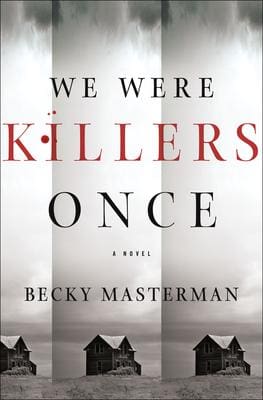Becky Masterman, author of the Brigid Quinn mysteries, will be appearing at The Poisoned Pen on Sunday, June 2 at 2 PM. She’ll be signing the fourth book in the series, We Were Killers Once, and she has quite a story to tell. Once you read Masterman’s comments, and watch the video, I think you’ll want to check out the Web Store for her books. https://bit.ly/2HB0hGz

Here’s Becky Masterman’s letter, the story behind We Were Killers Once.
We Were Killers Once is the fourth book in my series which began with Rage Against the Dying. In the series, Brigid Quinn is a former FBI special agent now trying to fit into retired life in a small town just outside of Tucson, Arizona. Trying to figure out how to be normal, how to be married, trying to cook, trying to keep her neighbors from finding out she can still kill a man with her bare hands. The series has been nominated for a lot of awards, praised by Janet Maslin of the NYT, as well as by NPR and even the AARP.
I’m writing to you personally this time because I’ve never been more excited by a story. Here’s why:
In late 1959 the Clutter family, mother, father, and teenage children, were killed in particularly bloody fashion in a small town in Kansas, two in their beds, two in the basement.
A couple of months later, it happened again. This time to a family named Walker in a small town on the west coast of Florida. A mother, father, and two children under the age of six, were shot in their living room near the Christmas tree.
Richard Eugene Hickock and Perry Smith, two petty felons, were convicted of the first mass murder. It was a story of such enduring fascination that a documentary aired as late as 2018, though the crime was initially made famous by Truman Capote in a novel called In Cold Blood. He called the book “˜immaculately factual.’
Except that everyone now knows it wasn’t.
Though Smith and Hickock were passing through the small town in Florida at the time of the Walker murders, Capote gives that crime a scant few paragraphs. A few interviews, a polygraph test, and that was that. Like Capote, the FBI and Kansas Bureau of Investigation weren’t so interested either. The case is still unsolved.
Who killed the Walker family? What motivated Smith to confess to two of the Kansas murders and then later revise his confession to take responsibility for the entire Clutter family? Why did Hickock, in a clemency hearing, state that they took more than a thousand dollars from the Clutter house, and not the forty dollars that’s in the original confession and Capote’s account? Who was the “˜hitchhiking boy’ and why does Smith dwell on him in the story?
Unanswered questions and discrepancies like these abound among Capote’s story, police reports, several confessions, at least two unpublished manuscripts, and more than a thousand prison documents from the time Hickock and Smith spent on death row.
That brings us to the what-if that authors do, weaving fact and fiction into a narrative puzzle, highlighted with themes of marital jealousy and whether even monsters can change.
What if, in We Were Killers Once, the nameless “˜hitchhiking boy’ that Smith described to Capote traveled with the two men around the country? What if he’s still alive and he’s coming for Brigid Quinn’s beloved husband for reasons known only to himself?
If so, he has no idea what’s in store for him. Because Brigid was a killer once, too.
*****
Here’s the book trailer for We Were Killers Once.
